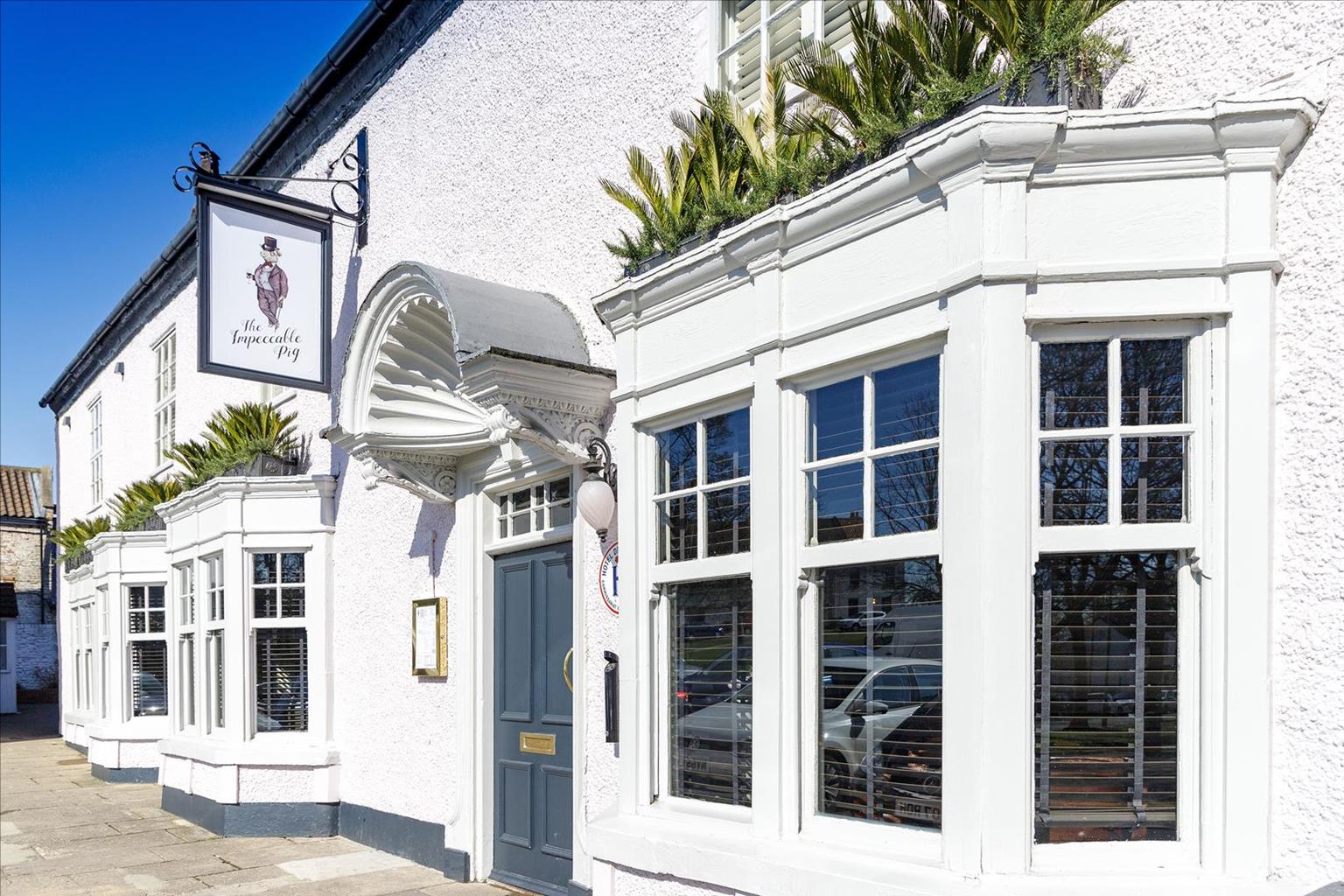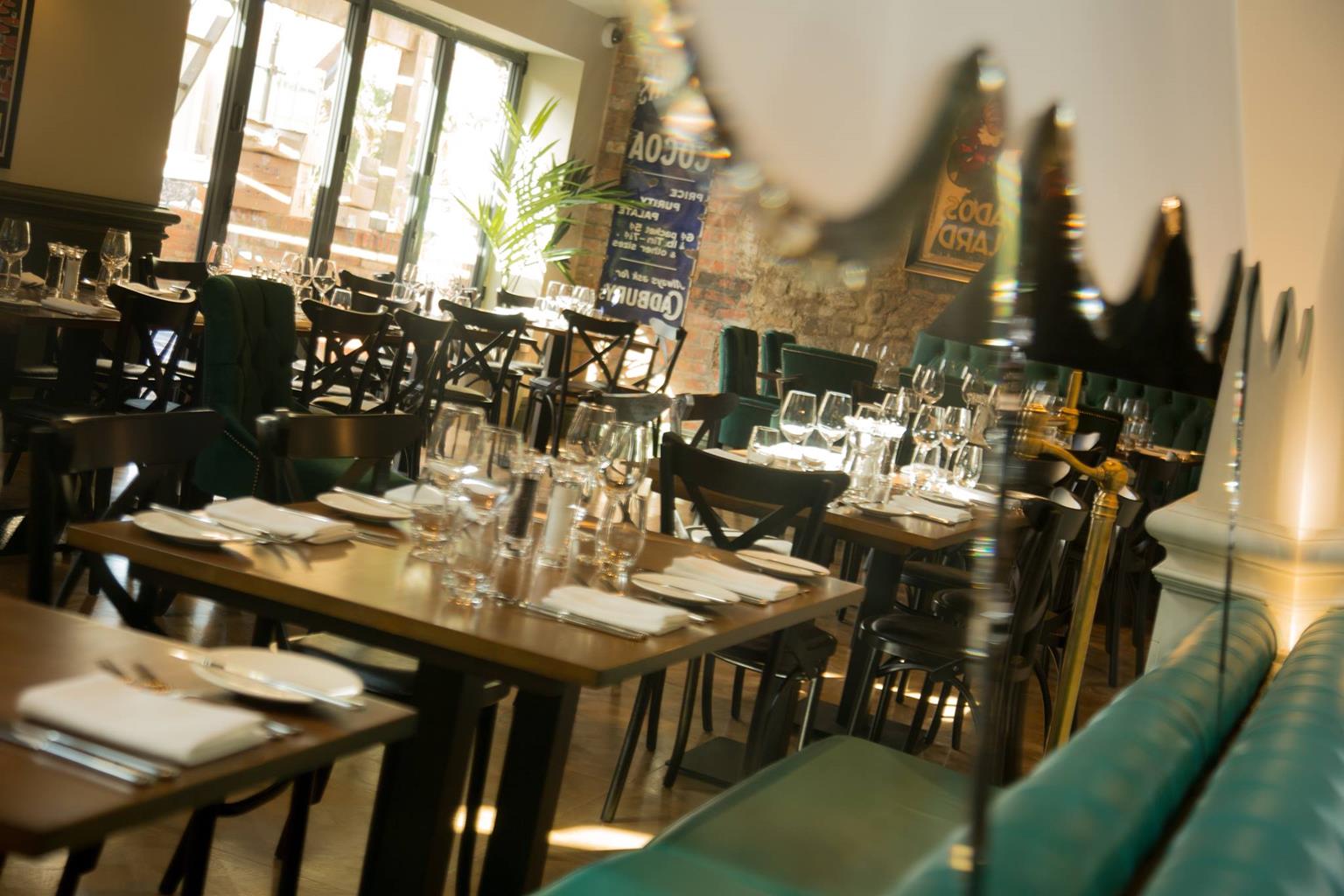These apartments in a newly converted historic building offer a truly luxurious hideaway in a…
Exploring Durham

2 miles (3.2kms)
About the walk
Surrounded on three sides by a dramatic hairpin bend of the River Wear, Durham's location has been a settlement site for over 4,000 years. Recorded history, however, begins in AD 995 with the arrival of monks, originally from Lindisfarne, bringing with them the body St Cuthbert. Forced to flee the island 120 years earlier in the face of Viking raids, they had first settled in Chester-le-Street. But the Vikings came again, and the community moved once more to find security on this island promontory. The very name Durham derives from Old English and Norse, dun holme meaning hill island.
Founded on a legend
Legend has it that, having left Chester-le-Street, the monks wandered east to Warden Law, beyond which the bier containing the saint's body could not be moved. Cuthbert appeared in a vision, telling them to go to Dun Holme, a place unknown to the monks until they met two milkmaids, searching for a dun cow they had last seen there. With them as guide, the monks discovered they could now move the bier and reaching the spot, they erected a small wooden shrine to house the relic. A carving on the south wall of the cathedral depicts the legend, and one of the city's oldest streets is called Dun Cow Lane.
A place of pilgrimage
It became a place of pilgrimage, and larger buildings – first in wood and then stone, both known as the White Church – soon replaced the simple shrine. The arrival of the Normans saw the start of a grand new cathedral, begun in 1093 but not completed until the 13th century with the construction of the towers. Nevertheless, it is a magnificent example of Romanesque architecture and, with the nearby castle is now designated a World Heritage Site. It contains both the shrine of St Cuthbert and the tomb of the Venerable Bede, who among his many translations and writings produced the Historia ecclesiastica gentis Anglorum – The Ecclesiastical History of the English People. The adjacent Benedictine priory was founded in 1083, and although it was dissolved by Henry VIII in 1539, the cloister and dormitory still convey something of the life led by the monks. There is a dark side to its history, for after the Battle of Dunbar in 1650, Cromwell held nearly 3,000 of the Scottish Army here as prisoners. Deprived of water, food and heat, over half died and were buried in mass graves before the rest were shipped to America as slaves.
A bishop's castle
The castle was founded in 1078 and was the seat of the Bishops of Durham, who in addition to their ecclesiastical responsibilities, held the power of the king in keeping order over this once unruly land. It continued as the Bishop's Palace until the seat was transferred to Auckland Castle in 1832. The castle was subsequently given to Durham University when it was founded five years later and now accommodates students, the library, common rooms and part of the university administration. However, certain parts are open to the public on guided tours. The Medieval Town The old town below is a wonderful maze of narrow streets, connected to the outside world by elegant bridges across the River Wear. This short walking tour takes you past the principal sights, but don't forget also to wander into the Market Square, presided over by statues of Neptune, a symbol of the city's aspirations to become a sea port, and the Marquess of Londonderry, who owned many of the collieries in the area. Pop into the town hall to learn about the Polish-born Count Boruwlaski, and have a look too inside the Victorian market hall, which is full of traders selling local produce.
Walk directions
Leave the car park at its lowest level by the river and turn right, climbing steps onto Elvet Bridge. It was built around 1170 by Bishop de Puiset to connect with his new suburb of Elvet. Don't cross but instead turn right and then swing left up steps into Saddler Street. After 150yds (137m), bear right up Owengate following signs for the Cathedral and Castle, to emerge at the edge of the Palace Green. Over to the right is the castle entrance, the Norman keep standing behind an 18th-century gateway. Guided tours include the Norman chapel and gallery and the Black Stair that leads from the medieval Great Hall to the 18th-century state rooms. It was here that the Prince Bishops of Durham held court. Their regal powers, which didn't end until 1832, allowed them to raise armies, mint coins, appoint judges and grant charters. Across Palace Green stands perhaps the greatest Norman cathedral in England. The main door by which you enter bears a fearsome lion-faced sanctuary ring and inside, the nave is lined by massive, carved pillars that support some of the earliest Gothic vaulting. St Cuthbert's shrine is to be found at the east end, near to the throne of the Prince Bishops, set high above the chancel. Bede's tomb lies in the delicate Galilee Chapel at the west end. Have a look too at the cloister and the monks' dormitory, or perhaps you might like to climb the 352 steps to the top of the tower for an unrivalled view over the city. Below in the undercroft, you will find the cathedral restaurant.
Emerging from the cathedral by the same door that you entered, turn right and leave the corner of the green along Dun Cow Lane. At the end, go right past the Durham Museum and Heritage Centre and then immediately left down Bow Lane, continuing over Kingsgate Bridge. On the far bank, walk out to the road and turn right up Church Street.
After 100yds (91m), bear off right past the war memorial into St Oswald's churchyard. Keep right at a fork and walk down to continue beside the river. Around the bend, carry on past the 18th-century Prebends' Bridge, just beyond which is a re-assembled pinnacle from the cathedral, replaced after its erosion by the elements. At a fork take the lower branch, passing behind the buildings of Durham School Boat Club. Beyond, a weir collected water for a fulling mill situated on the far bank. Pause to enjoy a classic view of the cathedral before continuing towards Framwellgate Bridge, erected by Bishop Flambard in 1128. Leave the riverbank up steps just before the bridge to emerge beside the Bishop Langley pub.
Cross the bridge into the old city, but as the street then bends left, look for a narrow, stepped passageway leaving through an opening on the right signed to Saddler Street. Called Moatside Lane, it was used by medieval pilgrims climbing to the cathedral. Keep ahead at a junction then bend left to emerge on Saddler Street. Turn left, passing the steps up which you began the walk, and continue down to the Market Square. To return to the car park, go back up Saddler Street and turn left into High Street. The entrance to the car park is at the end on the right.
Additional information
City paths and riverside tracks, no stiles
City centre overlooking a deep, horseshoe river gorge
On lead and not allowed in buildings
OS Explorer 308 Durham & Sunderland
Prince Bishop car park, off Leazes Road, A690
At car park
WALKING IN SAFETY
Read our tips to look after yourself and the environment when following this walk.
Find out more
Also in the area
About the area
Discover Durham
If the Prince-Bishops of Durham had set out to make their cathedral the greatest tourist attraction in the northeast, they could not have done better. In a sense, that is exactly what they did set out to do. For some five centuries, until the Protestant Reformation, pilgrimages were big business. The bones of St Cuthbert and the skull of St Oswald attracted the halt (disabled), the lame and the old to Durham in the hope of a miraculous healing.
The cathedral and the castle were what Durham was all about, from the early Middle Ages onwards, but even without these landmarks the city of Durham would be spectacular. From whichever side you approach, Durham is a magnificent sight. It’s a city that needs to be explored the hard way – on foot.
Nearby stays
Restaurants and Pubs
Nearby experiences
Recommended things to do
Why choose Rated Trips?
Your trusted guide to rated places across the UK
The best coverage
Discover more than 15,000 professionally rated places to stay, eat and visit from across the UK and Ireland.
Quality assured
Choose a place to stay safe in the knowledge that it has been expertly assessed by trained assessors.
Plan your next trip
Search by location or the type of place you're visiting to find your next ideal holiday experience.
Travel inspiration
Read our articles, city guides and recommended things to do for inspiration. We're here to help you explore the UK.















